Kyle Barker, AIA
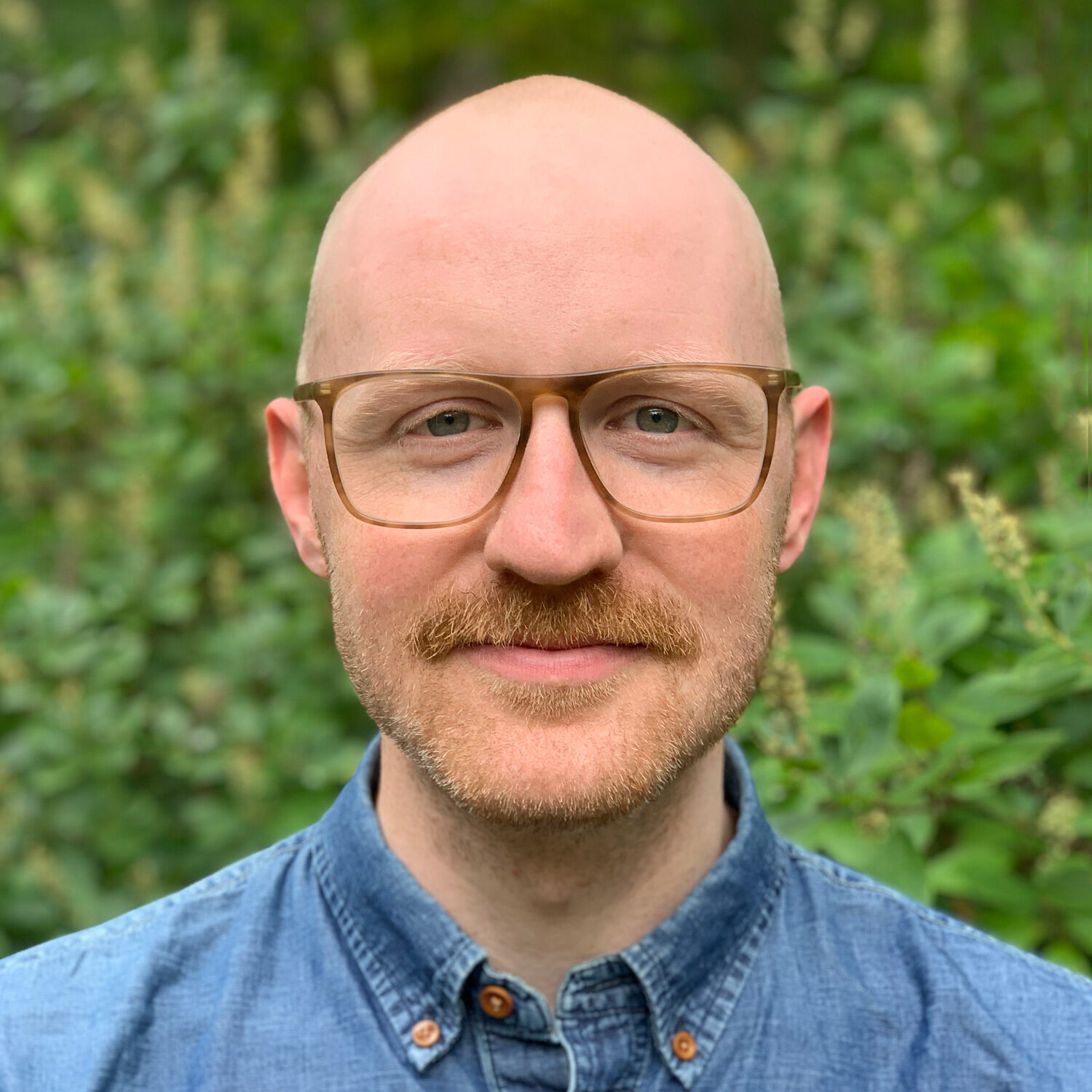
Founding Principal, Primary Projects
Professional or personal website
Degree(s)
Master of Architecture & Bachelor of Science
Professional interests
Housing, Affordability, Cohousing, Biomaterials, Embodied Carbon
BSA involvement
Co-Chair of the Small Practices Network Knowledge Community & Past Awards Juror (Small Practices & Unbuilt Awards)
If you could give the you of 10 years ago advice, what would it be?
Relax. Sometimes I focus too much on destinations and lose sight of the journey. Runner-up advice: every answer can be found in a book, through a smart friend, or on GreenBuildingAdvisor.com.
Has your career taken you anywhere you didn’t expect?
I never expected to start my own practice, but the overlapping crises of housing affordability and climate change created a sense of urgency. I’m not a risk-taker, so before launching Primary Projects in 2021, I spent a few years being a “business-sponge.” (Readers, Kyle invites you to email him and he will gladly share the full syllabus of books & podcasts! More reading recommendations from Kyle are included below this interview)
Have you won any award(s) from the BSA or another establishment that you are particularly proud of? What elements from that project would you like to see shape the future of the profession?
I won the Earl R. Flansburgh Young Designer’s Award this year. It “recognizes design excellence by an architect under 40,” and involves submitting a design philosophy statement, a portfolio, and letters of recommendation. It was an incredible honor, and as a small firm owner without a dedicated marketing department it felt like a win for all the scrappy firms out there.
What do you see as the largest barrier to equity in your profession?
There are complex, systemic forces at play that can feel unsolvable at times. One thing that feels actionable is to write better contracts. If we’re clear about scope, and charge appropriately, we can make enough money to pay people adequately. Our profession will only become more equitable if we can make it financially viable for a broader applicant pool.
What is the most effective step you’ve taken in your work toward a more sustainable built environment?
Reading “Build Beyond Zero” by Bruce King & Chris Magwood taught me the critical role that embodied carbon plays in climate change. Their book identifies immediate, actionable strategies for shifting buildings from the problem to the solution.
Which one of your current projects excites you the most?
I’m working on a 30-unit affordable housing (50% AMI) project in Portland, Maine. When I started Primary Projects I drew a three bubble Venn diagram of affordability, sustainability, and community, with the goal of targeting projects at the overlaps. This is the first contracted project that’s dead center.
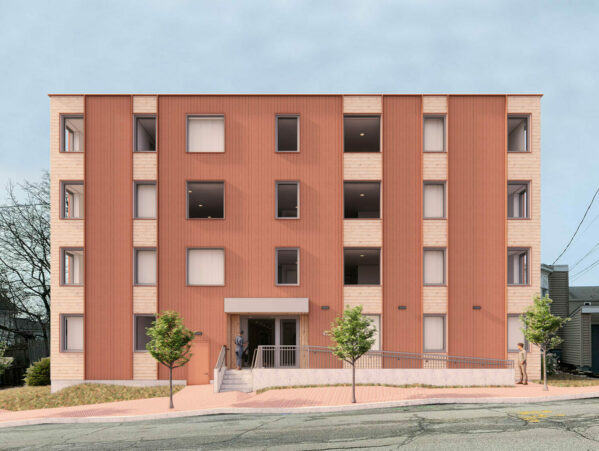
Uphill Housing: A 30-unit affordable housing project in Portland, Maine.
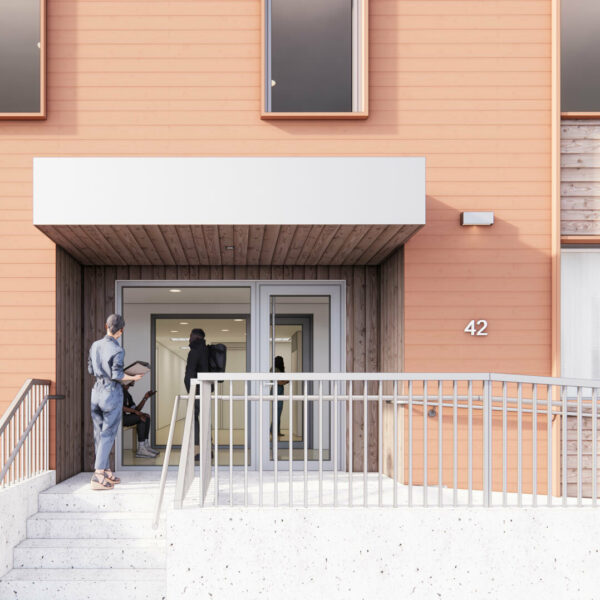
The alternating bands of siding help to scale the building back to the neighborhood.
What is your favorite Boston-area building or structure?
Avoiding the obvious ones, I love 99 High Street by Pietro Belluschi. It’s my favorite kind of building; a simple idea that pays off in unexpected ways. It answers the question, “can a tower be all bay windows?” with an emphatic, “Yes!” And from an environmental perspective, I appreciate that it’s not all-glass.
How do you believe architecture/design can have the greatest impact shaping a community?
Hopefully, this dynamic goes the other way. My goal is for communities to love the buildings and spaces I’m involved in creating. With limited resources, and varied contexts, that ends up being a different thing for each project.
Where do you find inspiration?
The longer I practice, the more inspired I am by architects who’ve made a commitment to thoughtful economy in their work. The design moves aren’t showy; they solve multiple problems through simple means, with a clarity of intent. Lacaton & Vassal, Arrhov Frick, and Horace Gifford are good examples of this, and I go back to their work again and again.
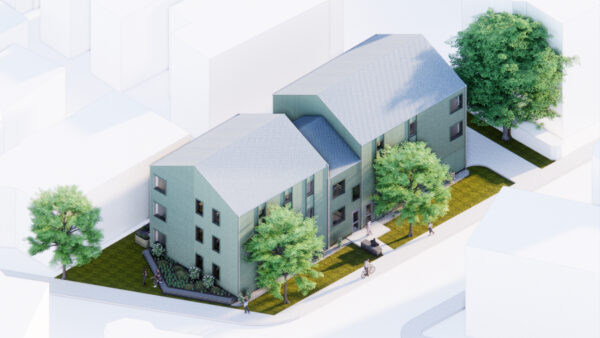
All Season Housing Axon: An 8-unit affordable housing proposal for Boston, filled with straw insulation.
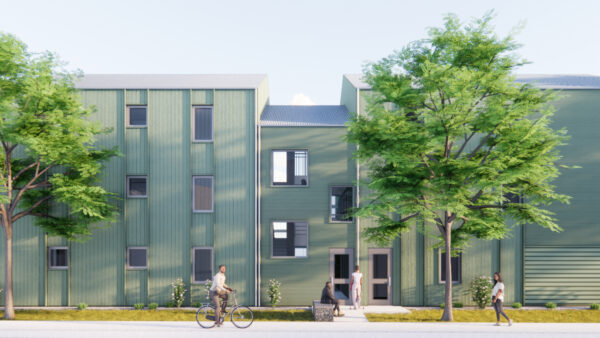
The form steps down at the stair to break the scale of the long-side of the project.
If you could redesign anything, what would it be?
I have yet to find a countertop compost bin that’s easy to clean & un-smelly.
What are you reading right now?
I read a lot. If you’re looking for some recs, I created a highlight on the Primary Projects Instagram profile with my favorites. With each one I include a few of my favorite excerpts. “Material Reform: Building for a Post-Carbon Future” by Material Cultures is a recent favorite.
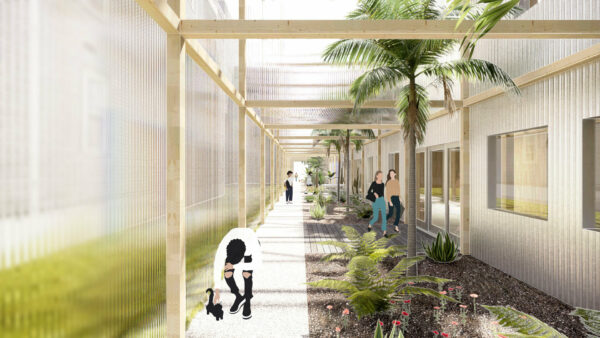
Green House: An intergenerational housing proposal for Boston that integrates a communal greenhouse.
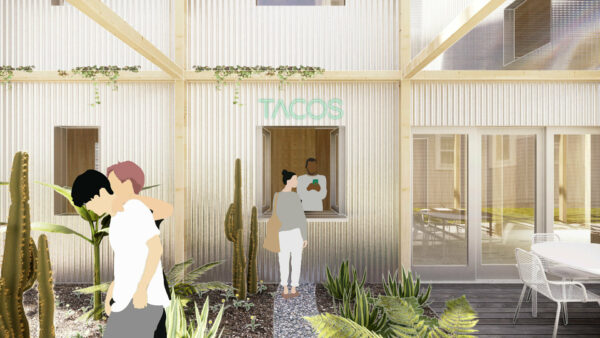
A third of the ground floor os Green House is given over to an in-law unit or small business (or a hybrid of both, as shown here).


